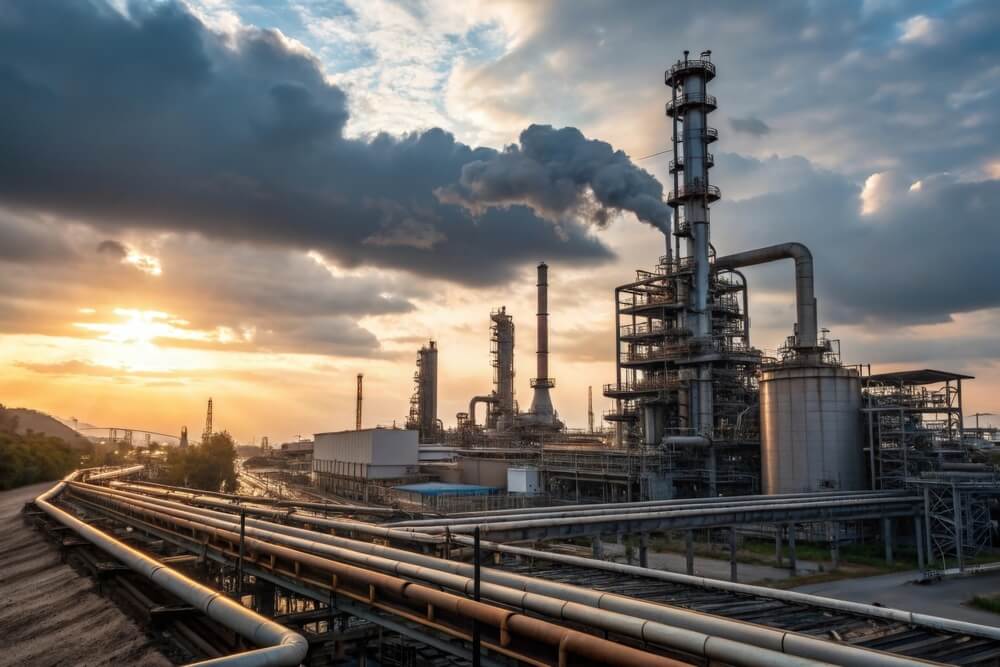Understanding the drone threat to oil and gas facilities
Oil and gas facilities, such as offshore platforms and refineries, face significant challenges from the evolving drone threats in today’s technological landscape. Drones, or unmanned aerial vehicles (UAVs), have become more accessible and possess capabilities that can be detrimental to these critical infrastructures. The potential threats drones pose include espionage, where sensitive operational data could be captured and transmitted, and sabotage, where drones could be used to deliver explosive payloads or disrupt operations. Moreover, when drones are flown without permission, they can cause serious safety risks, putting both people and equipment in danger. This makes UAV protection for industrial sites an imperative aspect of modern security strategies, guaranteeing the safety and continuity of operations.
Understanding these threats is essential because the oil and gas industry serves as a major foundation of the global economy, and any disruption can lead to serious consequences. Protecting these sites from drone threats to offshore platforms involves implementing comprehensive security protocols that include detection and neutralization technologies. These measures are essential in safeguarding not just the physical assets, but also the human resources and environmental safety. By recognizing the risks and proactively addressing them with advanced UAV protection systems, the industry can mitigate the potential damage from drone incursions, ensuring these essential facilities remain secure and operational.
Types of Anti-Drone Systems for Industrial Sites
As drones become more common, having strong anti-drone systems for oil and gas facilities is becoming more and more important. These systems are specifically designed to counteract the unique challenges posed by unauthorized UAVs over industrial sites like oil rigs and refineries. One of the primary technologies employed is radar-based detection, which allows for the real-time monitoring of airspace to identify and track drone movements. This early detection capability is very important for preparing appropriate responses to potential threats, ensuring that industrial operations are not disrupted.
Beyond just detecting drones, anti-drone systems also include ways to stop them from causing harm. One common method is signal jamming, which breaks the communication between the drone and its operator. This makes the drone unable to function properly and stops it from completing its task. When a stronger response is needed, physical methods can be used—like launching nets or using special drones to catch or disable the unwanted drone. These complete UAV protection systems for industrial sites are extremely important for keeping critical infrastructure safe and secure, and for reducing the dangers that come with unauthorized drone activity.
Implementing UAV Protection Strategies on Offshore Platforms
To successfully reduce drone threats to offshore platforms, implementing UAV protection strategies requires a well-planned approach that combines both advanced technology and clear procedures. Oil and gas companies can begin by conducting a comprehensive risk assessment to identify potential vulnerabilities in their current security framework. This evaluation provides the groundwork for integrating anti-drone systems for oil and gas infrastructure, guaranteeing that protection measures are tailored to the specific needs and operational dynamics of each site. By using radar-based detection systems, companies can keep a close watch on aerial activity, receiving real-time alerts and tracking any unauthorized drones near their platforms.
To strengthen these detection capabilities, companies should also put in place additional countermeasures, such as signal jamming and physical interception technologies. Signal jamming works by breaking the communication link between a rogue drone and its operator, stopping the drone from carrying out its mission. In addition, interception drones or methods that use nets can be used to physically stop or capture the drone. Just as important, regular staff training and emergency response drills help ensure that teams are prepared and ready to act quickly when faced with possible drone incursions. By including these advanced anti-drone technologies in their current security systems and encouraging a proactive security mindset, oil and gas companies can greatly lower the risks of drone threats and better protect their offshore platforms from unauthorized UAV activities.
Future Challenges in Drone Defense for the Oil and Gas Industry
The future of drone defense in the oil and gas industry faces many new challenges because of the fast progress in drone technology. As drones become more advanced, with features like stealth capabilities, longer flying range, and better carrying power, the dangers they bring to industrial sites grow. This means that security measures need to be regularly reviewed and updated, since older solutions may no longer work well against these new threats. Also, because drone technology can change quickly, new and unexpected ways of drone attacks could appear. This makes it important for anti-drone systems for oil and gas facilities to stay up-to-date with the latest technology and innovations.
To stay reliable, oil and gas companies need to keep investing in research and development for UAV protection for industrial sites. This means putting money into advanced detection systems that can spot even the hardest-to-detect drones, as well as creating smarter ways to quickly stop new types of threats. Additionally, working together with industry leaders, security experts, and technology makers is very important to share knowledge and improve drone defense. By being proactive and regularly updating their anti-drone systems, the oil and gas industry can better protect its important facilities against the constantly changing drone threats, ensuring strong security and the ability to handle future challenges.


Recent Comments